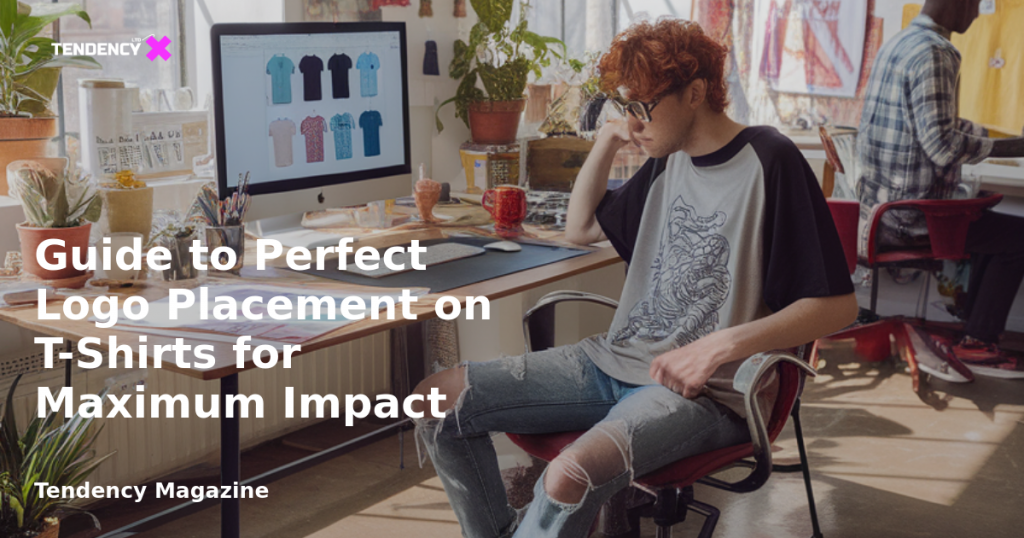Guide to Perfect Logo Placement on T-Shirts for Maximum Impact

Introduction
In the world of branding, your logo is much more than just a design—it’s a powerful symbol of your business identity. When it comes to printed merchandise, such as t-shirts, the placement of your logo can significantly influence how your brand is perceived and remembered. Whether you’re creating merchandise for an event, outfitting your team, or simply looking to make a statement, strategic logo placement can turn a simple t-shirt into a moving advertisement. In this guide, we’ll explore the nuances of logo placement on t-shirts to ensure your brand stands out.
Table of Contents
- Importance of Logo Placement
- Printing Methods
- Production Approaches
- Image Resolution Requirements
- Key Terms in Logo Printing
- T-shirt Logo Placement Options
- FAQs on Logo Placement
- Conclusion
Importance of Logo Placement
Your logo’s placement on a t-shirt isn’t just about aesthetics; it’s about maximizing visibility and impact. A well-placed logo can enhance brand recognition and convey professionalism. It’s crucial to consider how your logo’s position aligns with your brand message and the overall design of the t-shirt.
Printing Methods
Choosing the right printing method is the first step in bringing your logo to life on a t-shirt. The method you select will depend on various factors, including the complexity of the design, the type of fabric, and your budget.
Screen Printing
Screen printing is a popular choice for simple designs with limited colors. It’s cost-effective for bulk orders and provides a durable finish. However, it might not capture intricate details as effectively as other methods.
Embroidery
Embroidery adds a touch of elegance and texture to your logo. It’s ideal for small, simple designs and works well for creating a high-end look. However, large embroidered logos can make the t-shirt feel stiff.
Direct-to-Garment (DTG)
DTG printing is perfect for detailed and colorful designs. It offers high-resolution prints and is best suited for natural fabrics like cotton. While it’s excellent for small batches, it may not be the most cost-effective option for large orders.
Production Approaches
Your production approach will depend on your business needs and budget. Larger companies might opt for bulk orders to reduce costs, while smaller businesses could benefit from using print-on-demand services, which allow for flexibility and lower initial investment.
Image Resolution Requirements
To ensure your logo looks sharp and professional, provide your printing partner with a high-resolution image file. Typically, a resolution of 300 dpi (dots per inch) is considered high quality. Check with your printer for specific file requirements.
Key Terms in Logo Printing
Understanding key terms will help you communicate effectively with your printing partner and avoid common mistakes:
- Anchor Point: The visual center of your design, used for accurate placement.
- Print Location vs. Print Placement: Location refers to the general area (e.g., chest, back), while placement is the exact position within that area.
- Print Size vs. Print Area: Print size is the actual size of the logo, while print area considers the space it covers on the fabric.
- Standard Size vs. Oversized: Standard size is the default for each print location, while oversized refers to larger-than-standard designs.
- Maximum Size: The largest possible print size determined by factors like resolution and printer capacity.
T-shirt Logo Placement Options
Choosing the right placement for your logo can enhance its visibility and convey your brand’s identity. Here are some common options:
Left Chest
A classic choice for small logos, the left chest placement is traditional and often associated with preppy styles. It’s ideal for simple graphics or logos.
Center Chest
This placement puts your logo front and center, making it highly visible. It’s suitable for mid-sized designs with clean lines.
Full Chest
A versatile option for medium to large designs, full chest placement is great for bold text or detailed images.
Collar or Small Upper Back
Subtle and minimalist, this placement is often used for small logos in combination with larger designs elsewhere on the shirt.
Upper Back
Resembling the name placement on sports jerseys, the upper back is perfect for text-based logos.
Full Back
For maximum impact, a full back design offers the most surface area and is ideal for detailed imagery or larger text blocks.
Sleeves
Sleeve placements are subtle yet visible, suitable for minimalist logos or simple graphics.
FAQs on Logo Placement
- Where should I put my logo on a shirt? The best placement depends on your design style and the shirt’s other elements. Subtle locations like the sleeve work well for elaborate designs, while prominent placements on the chest or back are ideal for logos that make a statement.
- How many inches down should a logo be on a shirt? Distance from the collar or hem varies by location. Center chest prints, for example, typically start three to five inches below the collar.
- Where does a logo sit on a shirt? Popular placements include the full chest, back, and upper chest. The ideal location depends on your design’s size and complexity.
Conclusion
Effective logo placement on t-shirts can elevate your brand’s visibility and impact. By choosing the right printing method, understanding key terms, and selecting strategic placements, you can create t-shirts that not only look great but also enhance your brand’s presence. Whether you’re using these shirts for promotional events or team uniforms, thoughtful logo placement is key to maximizing your brand’s reach.
2025 Tendency LTD. All rights reserved.

